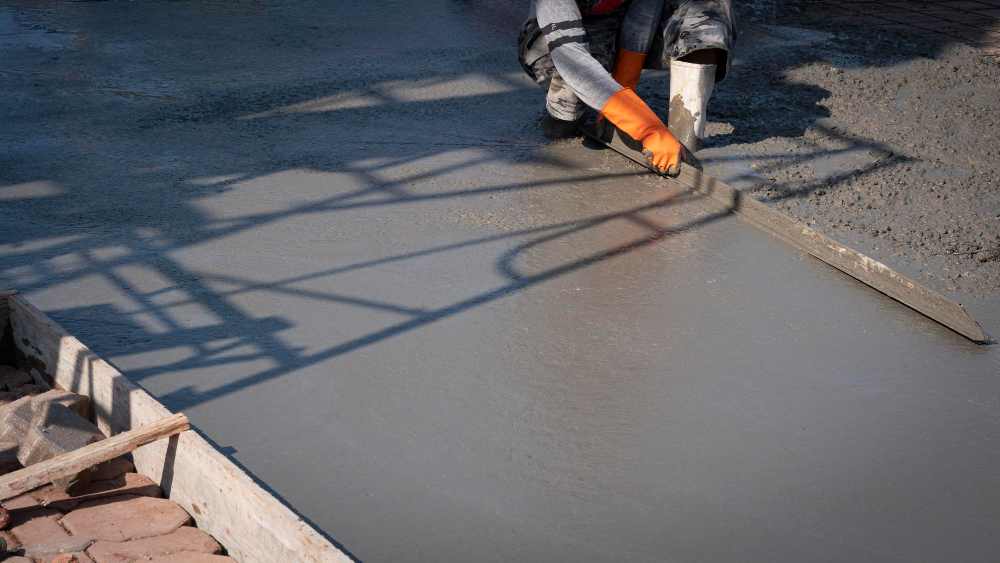Anhydrite screed is also known as calcium sulphate screed. As evident from its name, it consists of an anhydrite binder, along with water, sand, and other additives, i.e. polymers and catalysts. An anhydrite screed is a sustainable option as it consists of an anhydrite binder.
Anhydrite can be obtained either from natural mineral deposits or as a by-product of other industrial processes. Instead of disposing of it in landfills, it is milled and is then ultimately used in screed formation hence making it an eco-friendly option. In the UK, it is mainly sourced from the chemical industry.
Anhydrite screed has been introduced lately in the UK construction industry i.e. around 35 years ago. It comprises 20% of the screed market and is becoming increasingly popular. It is extremely durable with immense benefits. Continue reading to explore its benefits.
Anhydrite screeds are used majorly in four flooring screed constructions, as explained below:

It is in liquid form which means it can be pumped using concrete pumps and other equipment instead of laying it by hand. It has self-levelling characteristics that further make it an easy option.
It offers immense strength and durability that makes it a perfect candidate for high-traffic and heavy load-bearing areas. It is widely used in residential and commercial projects. It is perfectly suitable for projects with an estimated longevity of 50 to even 100 years!
Anhydrite screed is a more sustainable option than traditional screeding options as it is made of recycled products, i.e., 36% of its composition. Moreover, unlike traditional screeds, it also results in lesser CO2 production.
It causes way less shrinkage, unlike cement-based screed, so it can be laid in a larger base without the fear of shrinkage cracks.

Anhydrite screed has great thickness and density. That’s why it holds the characteristic of offering sound insulation.
One of the important characteristics of anhydrite screed is its thermal conductivity. Contrary to traditional screed, it has a high thermal conductivity rating, allowing heat to pass through it. That’s why they are often laid on underfloor heating systems.
It can dry within a week as compared to traditional screed which may take up to 4 weeks to dry. This way using it ensures timely project completion and lesser inconvenience. Moreover, under monitored conditions, it takes one to two days for the screed setting to allow light foot traffic.
It can be applied in a thin layer making it a lightweight option than traditional screed. Furthermore, it doesn’t require as much reinforcement as traditional screeds, making it a time and budget-friendly option.
Unlike cement screed, the anhydrite screed doesn’t curl over the edges.

Anhydrite screed pumping offers immense flexibility as it can be pumped 200 metres. It means it can be delivered 200 metres away from the point where the pump mixer is set.
Generally, a machine can pump approximately 20 cubic metres of screed per hour. It implies that the pumping is so efficient that you can actually lay 360 m2 of screed within an hour!
If you are starting your construction project and need ready-mix concrete or want to hire a concrete pump, then contact the experts at Ready Mix Concrete.
A boom pump uses a robotic arm (boom) to deliver concrete with precision at height or distance, making it ideal for large-scale and high-rise projects. A line pump, on the other hand, is better suited for smaller, ground-level jobs and uses flexible hoses to deliver concrete. We offer both types depending on your project requirements.
With a boom pump, concrete can be pumped up to 70 metres vertically and over 200 metres horizontally. Line pumps can reach around 150 metres horizontally, depending on the setup and hose diameter. Our experts will assess your site and recommend the best solution to reach even the most challenging locations.
Yes, it’s important to ensure the site is accessible, level, and free from obstructions. There should be enough space for the pump vehicle to park and operate safely. If you’re unsure about access or clearance, our team can provide advice or arrange a pre-site visit.
The duration of a concrete pumping job depends on the volume and complexity of the pour. In general, a typical residential pour can be completed in under two hours. Our efficient service aims to minimise downtime and keep your construction project on schedule.
Yes, concrete pumps can operate in light rain and mild weather conditions, but heavy rain, high winds, or frozen ground may delay or halt operations for safety reasons. We always monitor the forecast and keep you informed of any possible schedule changes.
Yes, all our pump hires include a trained and experienced operator who will handle the equipment and ensure concrete is placed efficiently and safely. They’ll also help guide you through the process on-site, ensuring a smooth pour every time.
Ready Mix Concrete London (Trading as Pro-Mix Concrete Ltd)
Copyright © 2025 | Ready Mix Concrete London (Trading as Pro-Mix Concrete Ltd) | All Rights Reserved.